Nike designer Eric Avar talks about working with Kobe Bryant, Kobe X
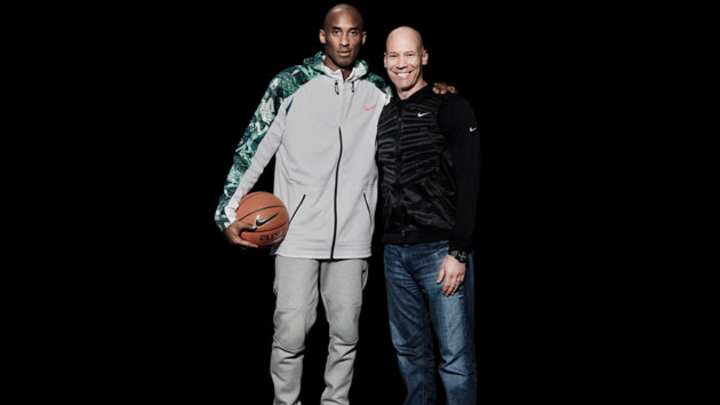
LOS ANGELES — Sometimes Nike shoe designer Eric Avar gets five minutes in a hotel room with Kobe Bryant. Sometimes he has three hours to sit down and brainstorm ideas for Kobe’s signature shoe line.
But during the design of the newly released Kobe X -- the tenth signature sneaker Avar and Bryant have collaborated on -- Avar enjoyed something entirely new: two days with Kobe on a yacht.
- MORE NBA: Sneaker Hub | NBA All-Star coverage | Midseason awards
“We didn’t talk basketball, we didn’t talk shoes,” Avar tells SI.com. “We didn’t talk about anything. That's probably one of the most intense experiences I’ve had with Kobe.”
Deep-sea fishing on a 100-foot yacht, Avar and Kobe were acting like younger versions of themselves. “It was playful, creative,” Avar says. “(Kobe) was just one of the guys, just a really cool experience. It was a really insightful trip.”
As Avar learned more about Kobe as a person, he worked to help Kobe incorporate his current view of “transparency” into the Kobe X, complete with a transparent sole to help show off design and technology that speaks to Kobe’s current state of mind.

“What I’ve done in the latter stages of my career is become more transparent," Bryant tells SI.com during a sit-down in Hollywood’s Milk Studio near Santa Monica Boulevard. "As I’ve evolved and continue to grow, I have become more comfortable to let people in and see me as a person. It is almost like the governor disappears. There’s such a feeling of comfort and being relaxed by being yourself. I wanted to reflect that in the shoe, be able to communicate that.”
The Avar-Bryant relationship is nothing new. They’ve worked together for over a decade now, with Kobe intimately involved in every aspect of the creation of his signature kicks.
“Eric and I both know when we are on to something when the rest of the room gets really uncomfortable,” Bryant says. “We tend to speak in code, I mean it's code for those who are around. For us, it's just how we talk.”
Kobe Bryant on the Kobe X and how sneakers tell the story of his career
Kobe says the two speak in terms of nature, martial arts and philosophy. “I guess we speak in concepts instead of speaking very literally about something,” Kobe says. “We speak philosophically about things.”
When Kobe wanted to go with a low-top in 2008, he says Avar believed in the idea and backed him up, even with others not so much on board.
“The great thing about Kobe is that he is so direct, he is so honest,” Avar says. “He has a strong point of view, he has a strong voice. (There is) always a very open and collaborative conversation. It is just cool.”
Kobe’s level intensity is off the charts when he's on the court and Avar says it translates to the development of his signature shoes as well, even during the creative storytelling process.
“With Kobe, we talk about his undying work ethic and sense of perfection, which is why we get along so well,” Avar says. “I try to apply that to design.”
Avar doesn’t always know where that will lead, though. Over a year ago, when the Kobe 9 design was “baked” and done from an engineering and design perspective, Kobe wasn’t finished with it. A meeting near the end of the process -- as Avar was going over final colors with Kobe -- took a twist. Bryant had just returned from Achilles surgery and had pictures with him.
- NEW SHOE RELEASES: Carmelo Anthony | Stephen Curry | Damian Lillard
“He had taken pictures of the actual surgery and sutures,” Avar says. “It was kind of like a train wreck -- it was fascinating, but gnarly.”
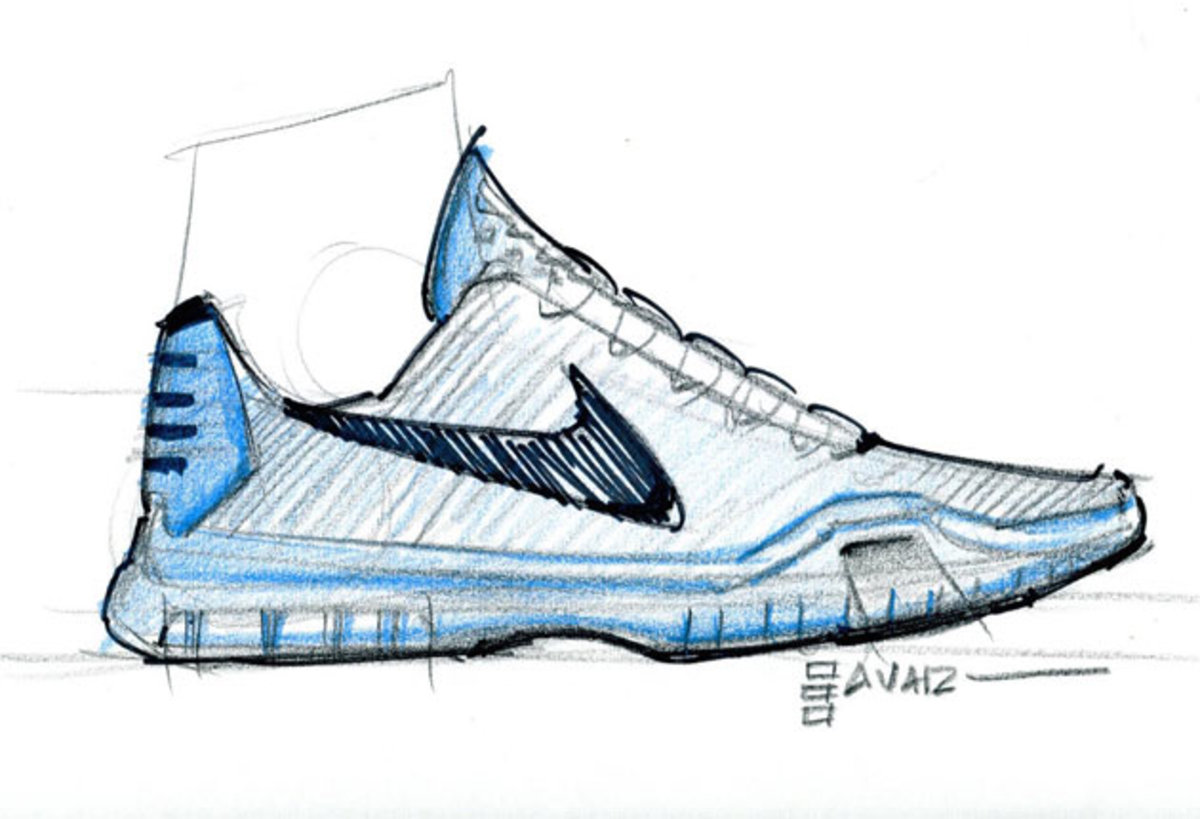
It was then that Kobe came up with the idea to incorporate the nine red stitch marks onto the back of the Kobe 9. It was so late in the process, it barely got added. “It was a cool signature element from a metaphorical standpoint with Kobe, representing him coming back from adversity,” Avar says.
When it came time to design the Kobe X, Bryant didn’t want to fully abandon that design element. The duo reworked the concept, adding four red stitches to the Kobe X, representing the four feet of thread needed to sew his Achilles back together.
Kobe Bryant on growing old, players he respects and finding his inner Zen
Probably the most major decision the two made together was before the 2008 shoe, the move to a low-top. “He felt like he could perform in a low-top and didn’t want that extra bulk and material around his ankle to inhibit his range of motion,” Avar says. Years later, the Kobe line returned to an ultra-high top, but with an engineered yarn, Flyknit, so the shoe didn’t have the bulk and weight of a traditional high-top.
Being able to explore different technology comes from Avar and Bryant designing the Kobe line out of Nike’s Advance Innovation Group, not the basketball category. “Myself and the entire team are exposed to all different types of emerging technologies across all different sports,” Avar says.
That mindset puts new ideas in front of Kobe sooner, something he craves when it comes to telling his exact sneaker story. While Kobe says that his products create a “snapshot” of who he is, Avar knows his place in the larger Kobe Bryant story.
“Kobe’s ultimate legacy will be much bigger and broader than product,” Avar says. “The role I play in that or the (design) team plays in that is a small part. He has big ideas and big dreams. It is just a part of who and what he is. Even at some small level through the design of his product, we try to capture some of those thoughts, dreams and inspirations that can help contribute to what will be a much broader legacy.”
Tim Newcomb covers stadiums, design and gear for Sports Illustrated. Follow him on Twitter at @tdnewcomb.
History of Kobe Bryant's Signature Sneakers
KB8 (adidas)
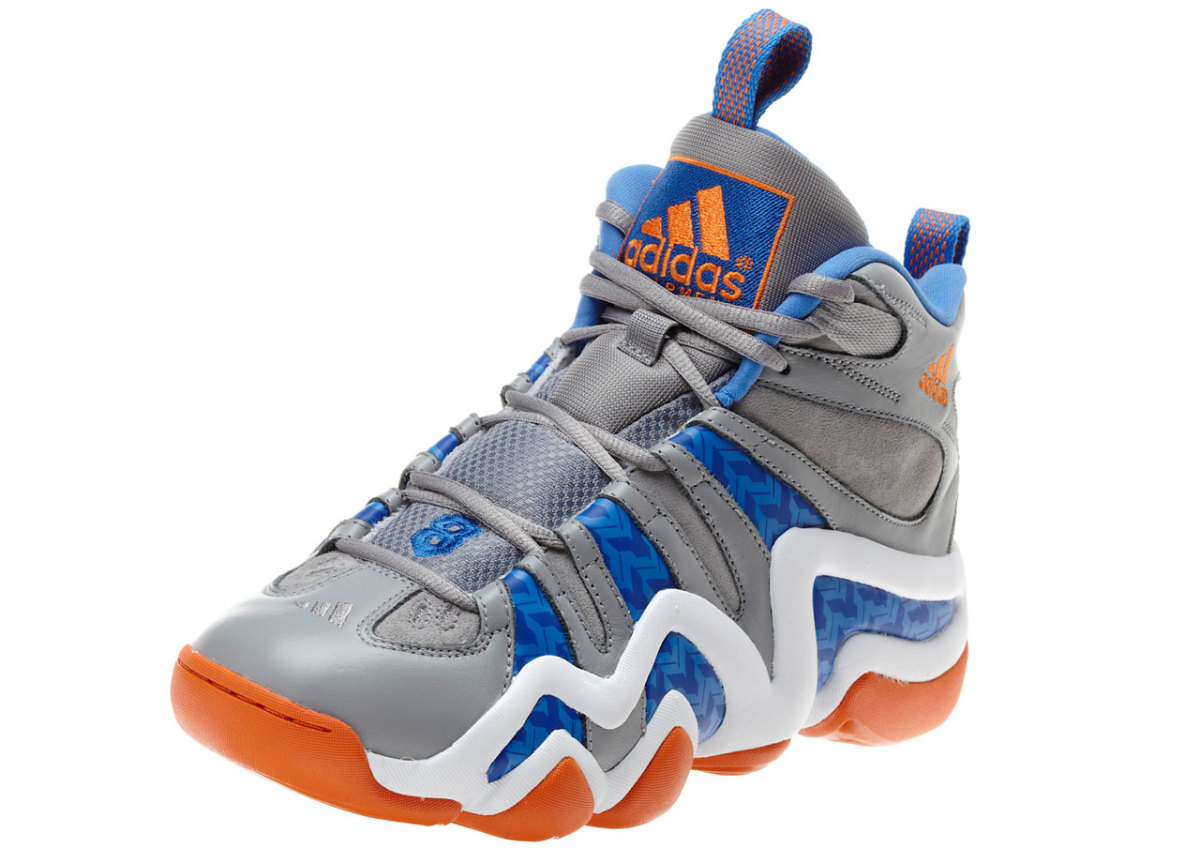
Drafted straight out of high school, Kobe started his rookie season in the adidas EQT Elevation, but his first signature shoe came in 1997 with the adidas release of the KB8, now known as the Crazy 8. With technology said to capture the natural motion of the shoe, the first signature Kobe style had bold lines.
KB8 II (adidas)
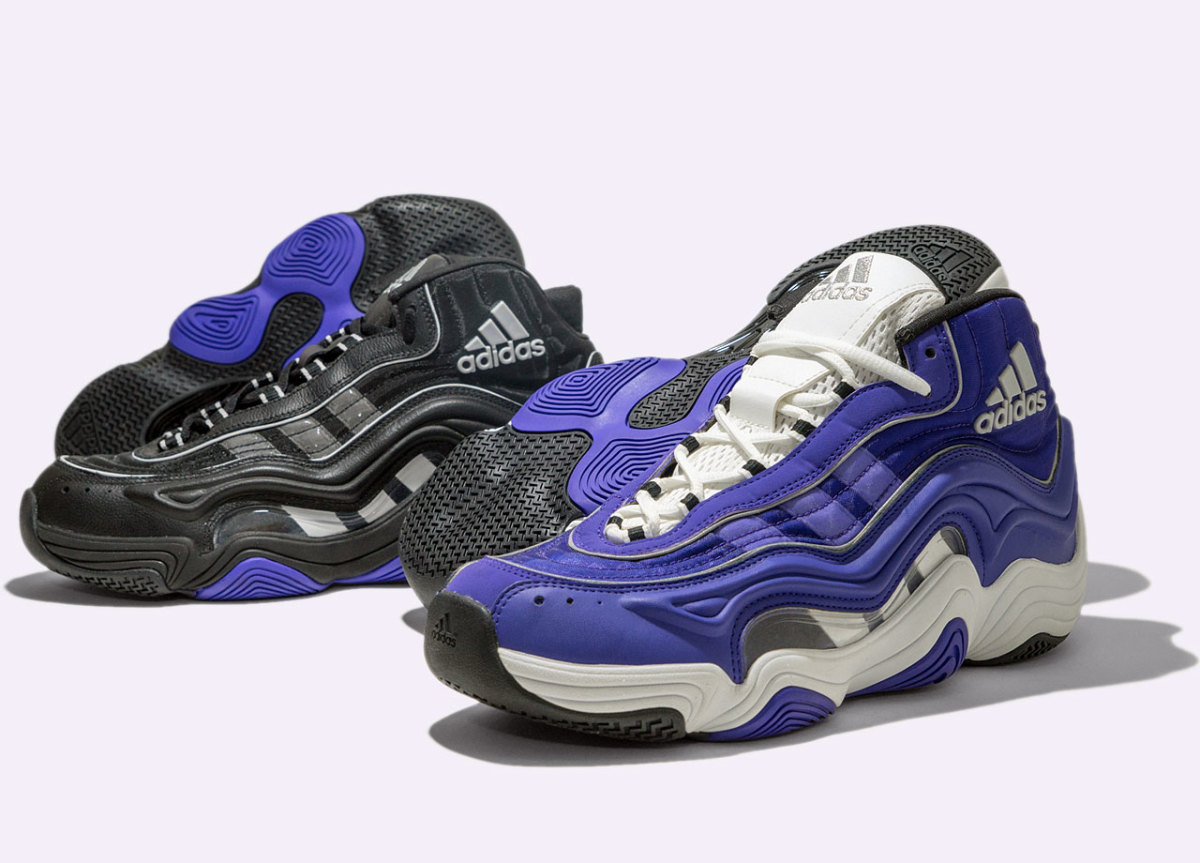
While some of the original boldness was played down, nothing quite says ‘90s style as the 1998-released second signature for Kobe. While known as the Crazy 2, the exaggerated features included a wave-shaped upper molding, see-through mesh to highlight the three stripe logo and a herringbone outsole pattern.
KB8 III (adidas)
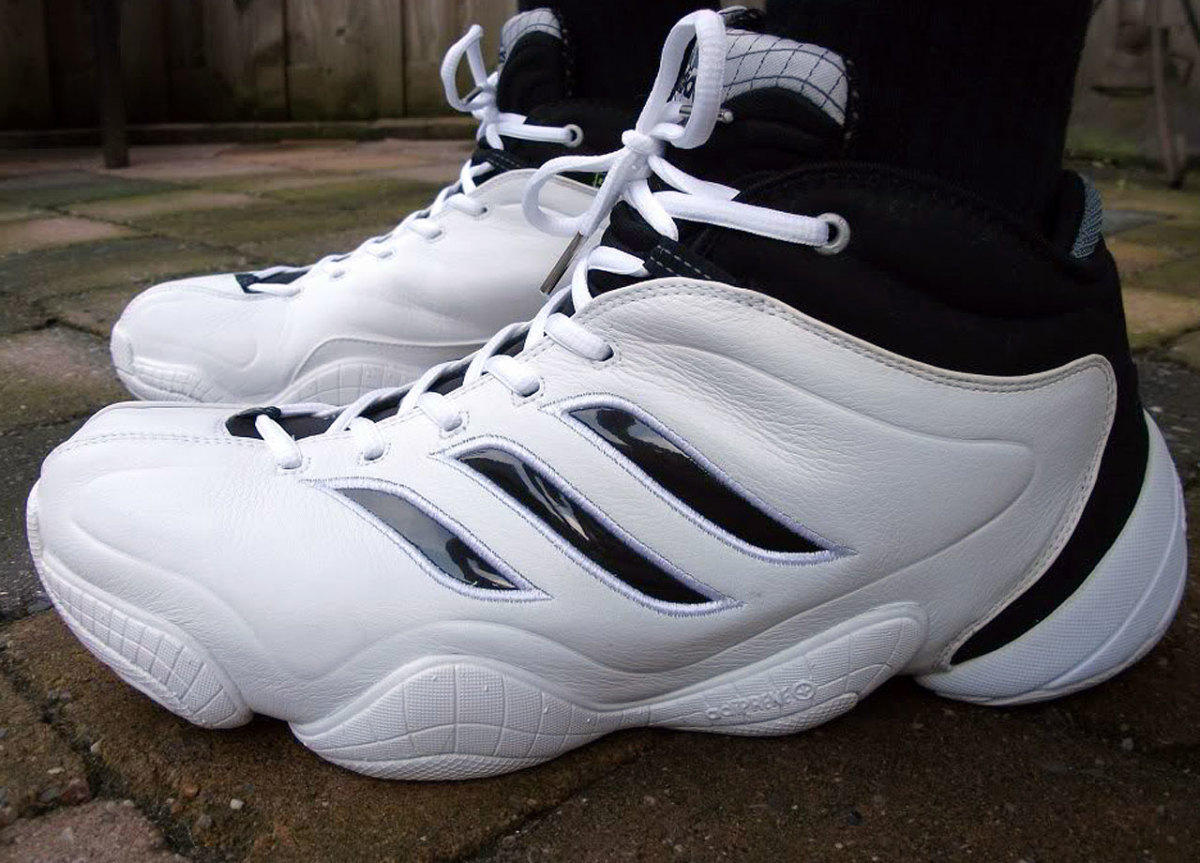
Think of the Crazy 8 and Crazy 2 slightly toned down, but with a bit more angularity. Released in 1999, the adidas three stripes take on a new look on the side, while the wavy look we saw from the second Kobe shoe remains in the third installment. But get ready, what adidas did next rode no trending wave.
The Kobe (adidas)
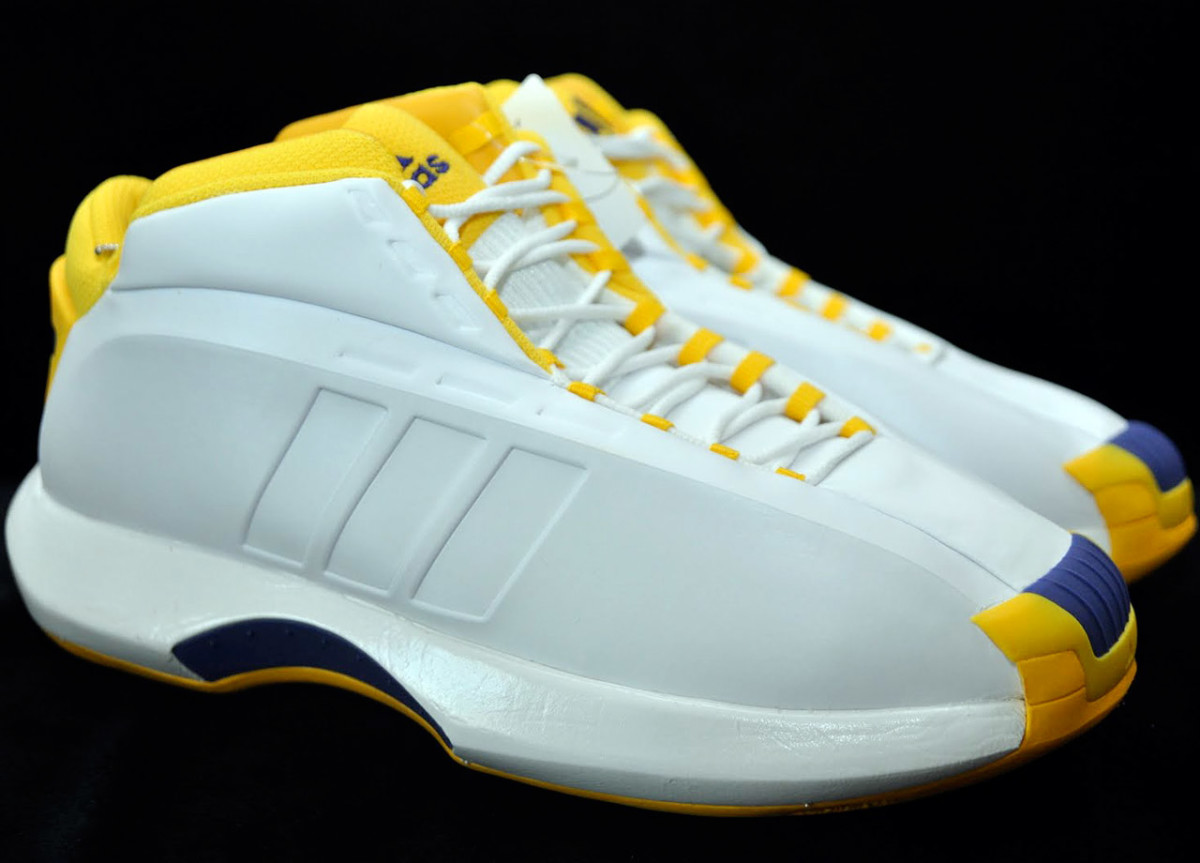
The year was 2000. It was time to return to the moon. The Kobe, later dubbed the Crazy 1, had a molded upper on his signature that was from a future we’ve never gotten to (or a past we never really wanted to see). The shoe wasn’t all moon-related, though, with some style touches that gave it a bit of sleekness. Kobe successfully wore the shoes, which is a lot more than we can say about what happened next.
The Kobe Two (adidas)
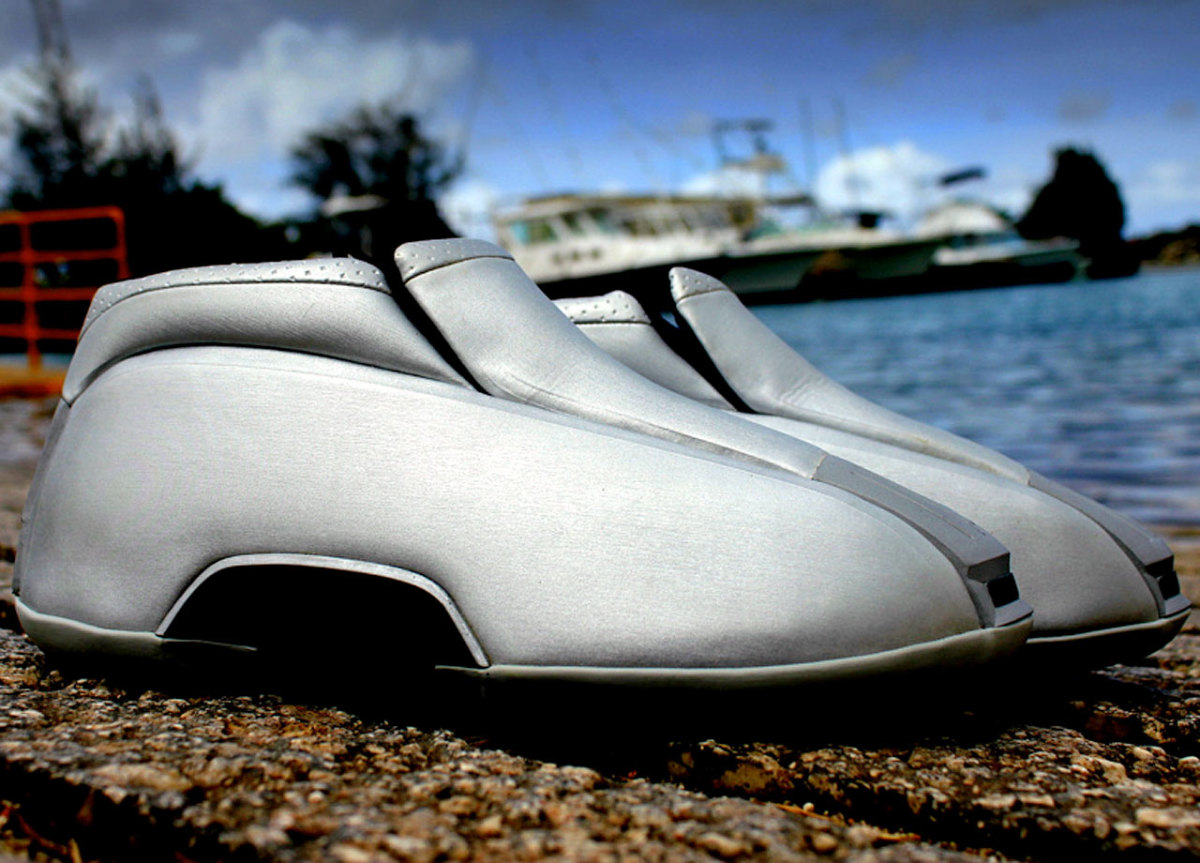
Space shoes take two. That’s what happened when adidas rolled out the 2001 release of the Kobe space installment. These were as blocky and space-related as possible and Kobe stuck with The Kobe.
Zoom Kobe I (Nike)
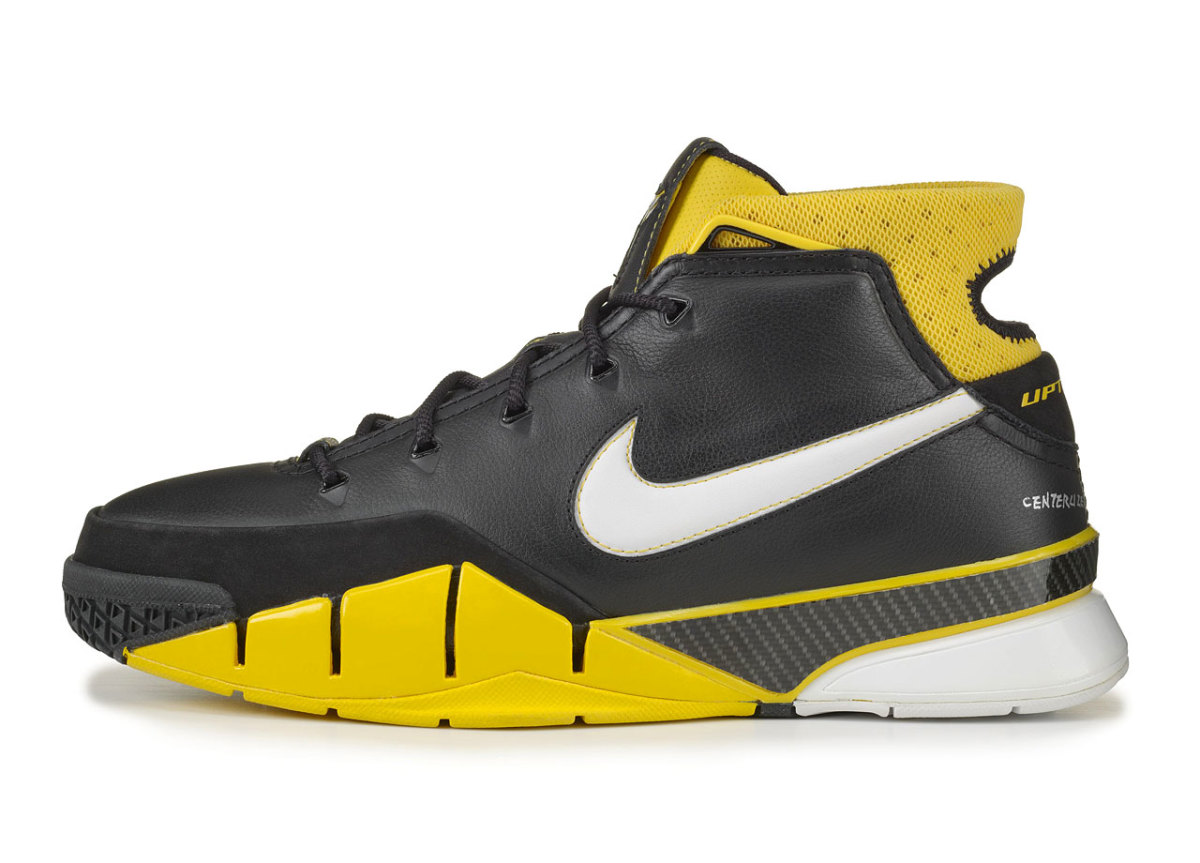
A prolonged switch from adidas to Nike (and social and legal issues off the court) kept the first signature Nike shoe for Kobe from the sneaker world until the 2005 release of a full-grain leather shoe. A full-length carbon fiber spring plate was key technology aimed at lightweight stability.
Zoom Kobe II (Nike)
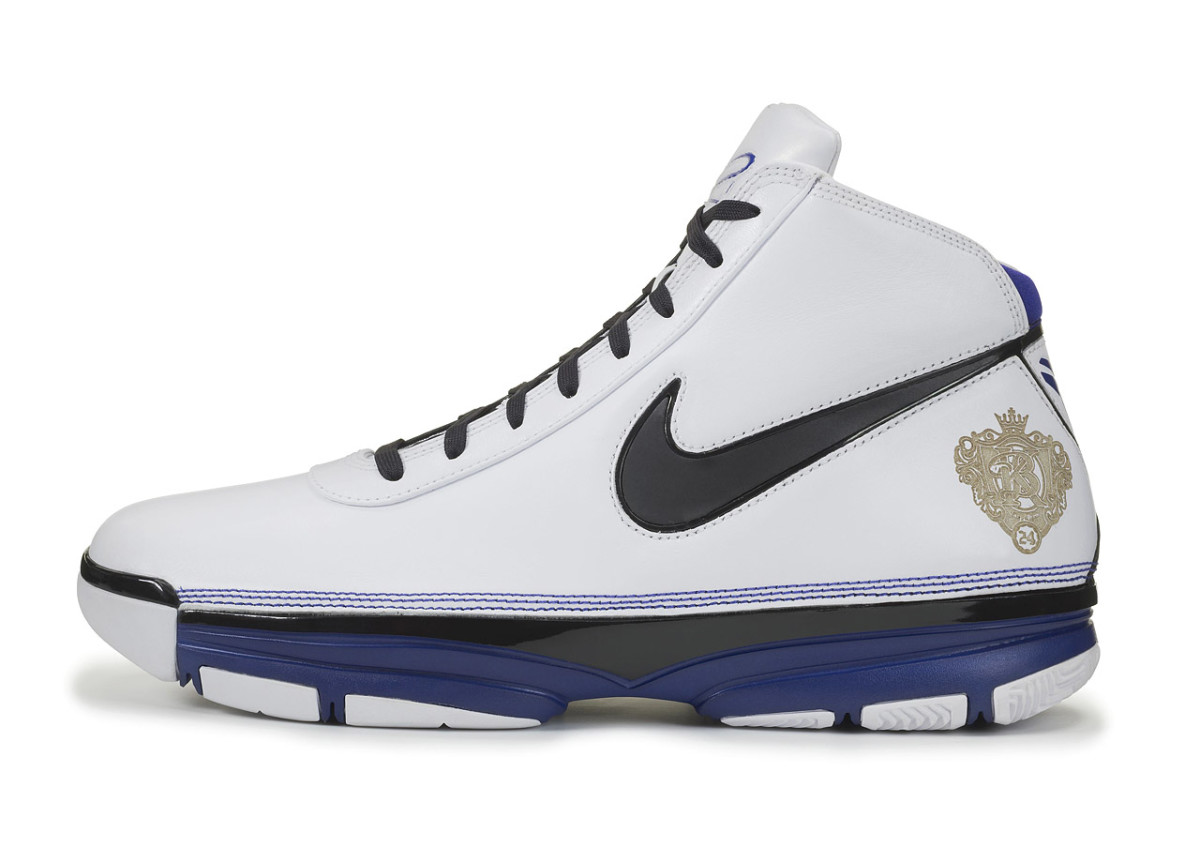
The second Kobe signature from Nike took on a bit more style, adding in patterns and straps, but keeping the overall silhouette of the signature line relatively in tact. This signature shoe debuted in 2007.
Zoom Kobe III (Nike)
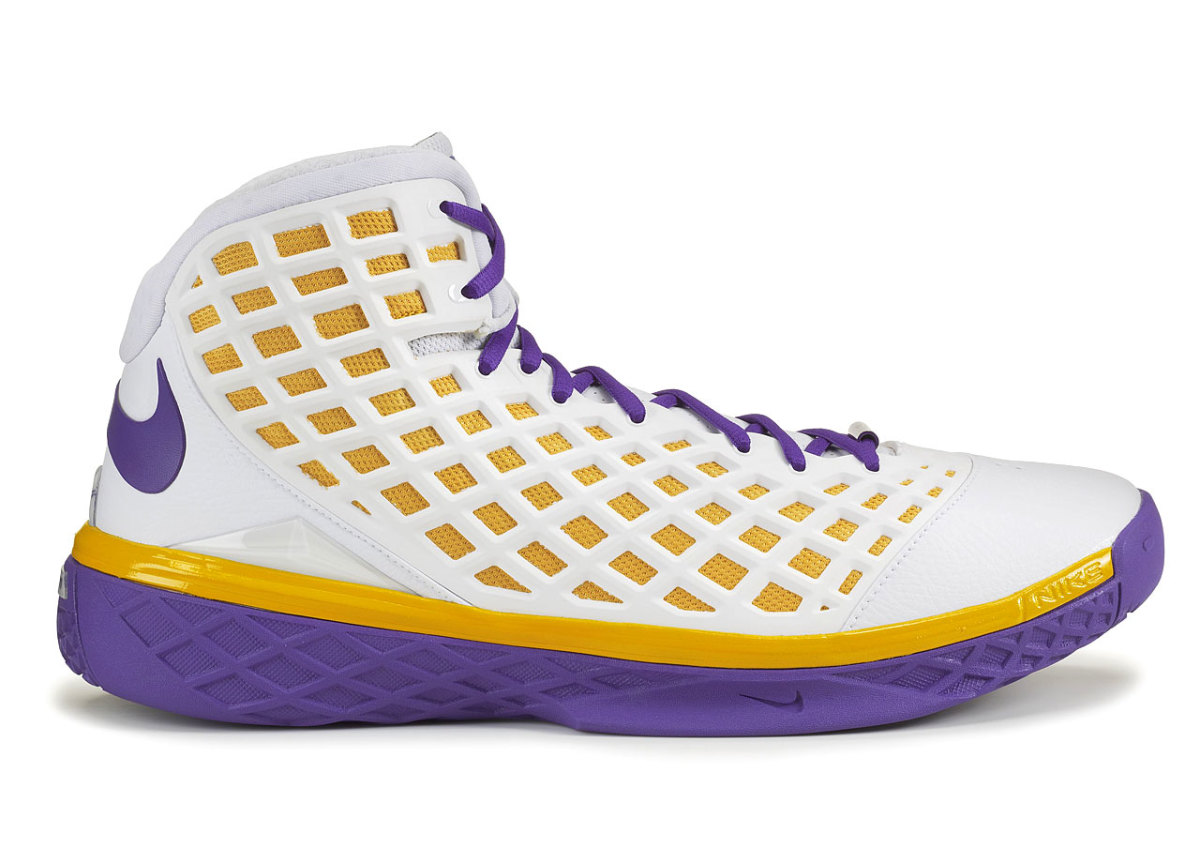
In 2008, Nike gave us an upper featuring a net shape for support of the foot and the opportunity for Nike to start playing with color and aesthetics. The carbon fiber plate continued through and a full-length Zoom Air unit in the midsole aimed to allow for cushioned movement.
Zoom Kobe IV (Nike)
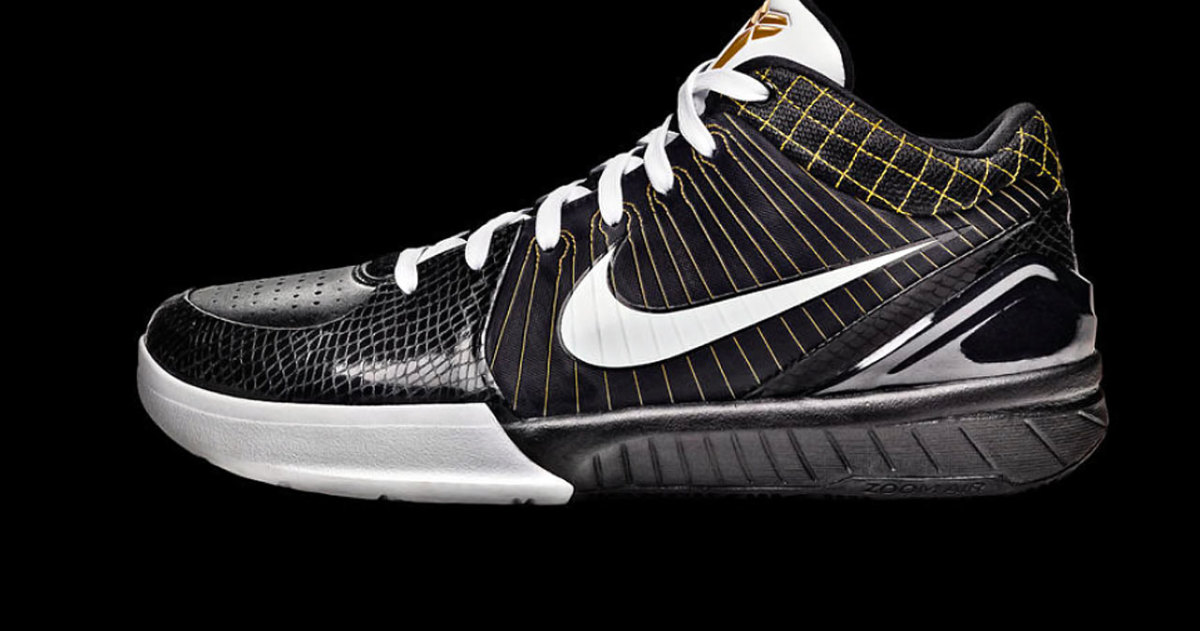
In 2008 things started getting a little different for Kobe and Nike. The 2008 release of the Kobe IV added a low-cut profile that still aimed for support. Inspired by soccer -- a sport not clamoring for high-top shoes despite the same constant starting and stopping -- this signature version was a Kobe push to provide a low-cut basketball shoe. Using Flywire, which also defined the aesthetic, for the first time in a Kobe shoe, the technology of a low-cut shoe was there. And the Black Mamba persona inspired the look of it all.
Zoom Kobe V (Nike)
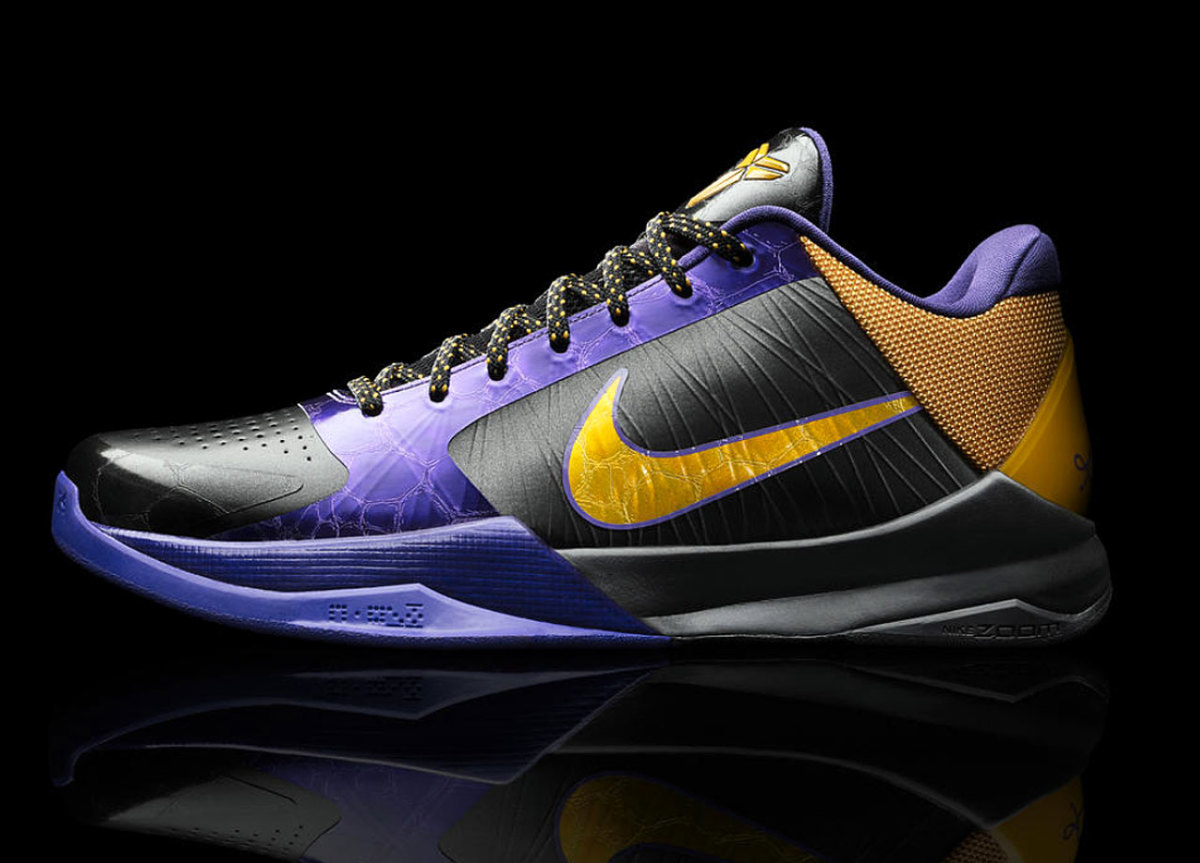
In 2009, Kobe went even lower and lighter than he did with the IV the year before. By further modifying the arch and heel of the shoe, the V decoupled the heel to help keep the shoe on the floor. A glass/carbon fiber plate in the mid-foot helps with control and rigidity. The new technologies underfoot were supported by stronger Flywire, heat welded bonding of the upper and an injected cushioning system.
Zoom Kobe VI
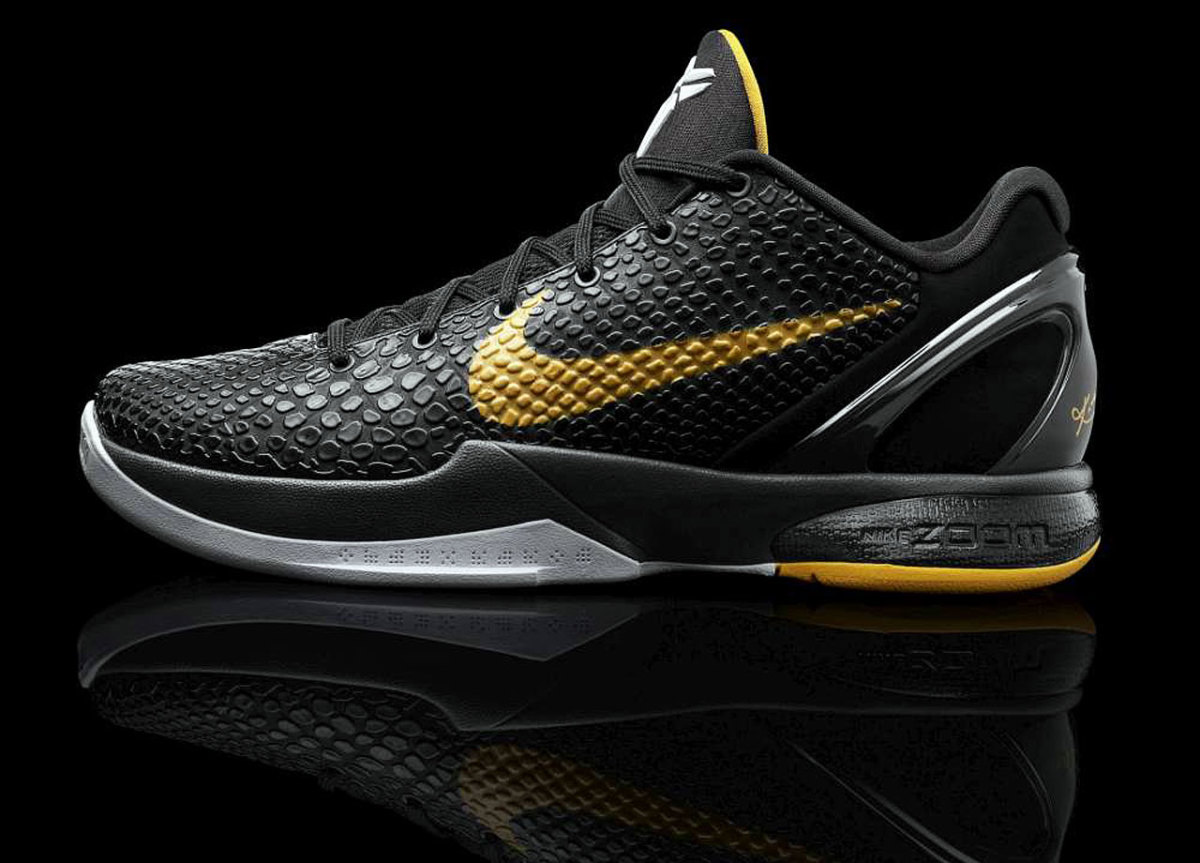
Nike calls them “islands,” the Black Mamba-inspired pieces of snake skin that increase or decrease in size to protect the durability of the shoe. The continued lightweight, low-cut design with Flywire upgraded in the late 2010 release of the VI with a new fit system that included a dual-layer memory foam sockliner conforming to the foot and an injected cushioning system. Nike Zoom Air units in the heel and forefoot added additional cushioning.
Zoom Kobe VII
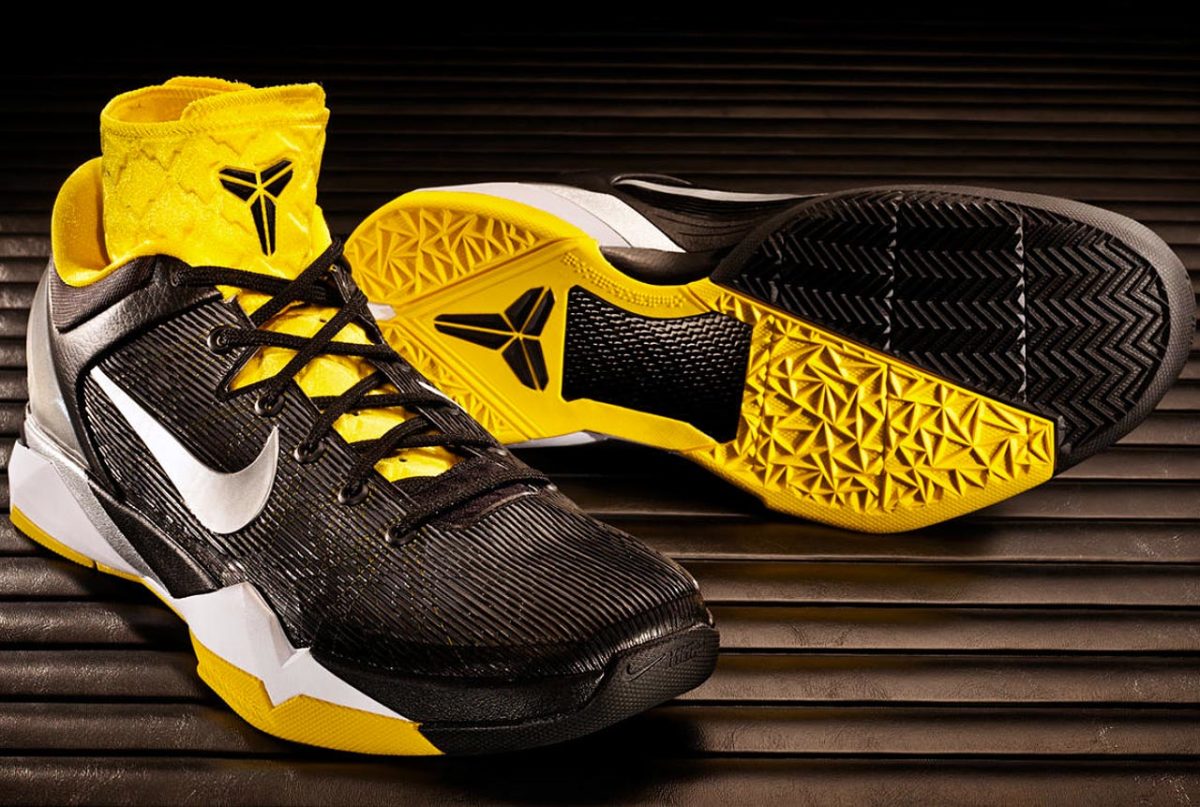
By late 2011, Nike was ready to customize the Kobe signature, offering cushioned inserts for either a lightweight focus or a more padded approach. Players were encouraged to switch back and forth as needed. The glass reinforced elements, Flywire and heel supports all went to the next generation of technology, while the aesthetic look focused on Kobe as a “predator.”
Zoom Kobe VIII
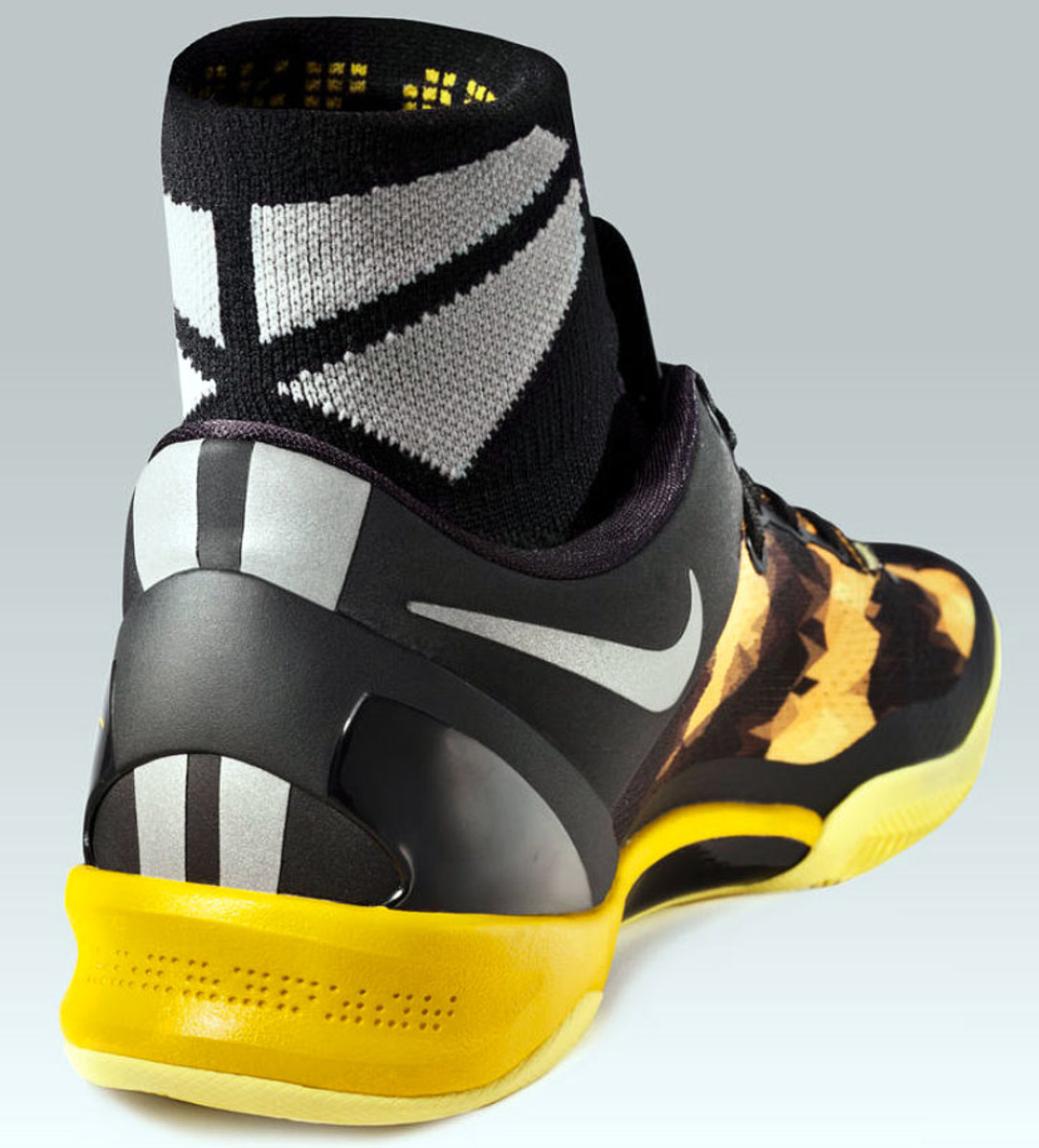
In December 2012, Nike went lower and lighter than ever before with a Kobe signature, using engineered mesh for the first time in a basketball shoe -- of course with a snakeskin pattern to go all Black Mamba on us -- to drop the weight of the VIII to 9.6 ounces. With 90 percent mesh and a no-sew construction, designers put more protective and supportive mesh where needed, while lightening and making other areas more breathable. A full-length Lunarlon midsole helped cushion against the thinnest outsole for a Kobe signature yet.
Zoom KOBE 9
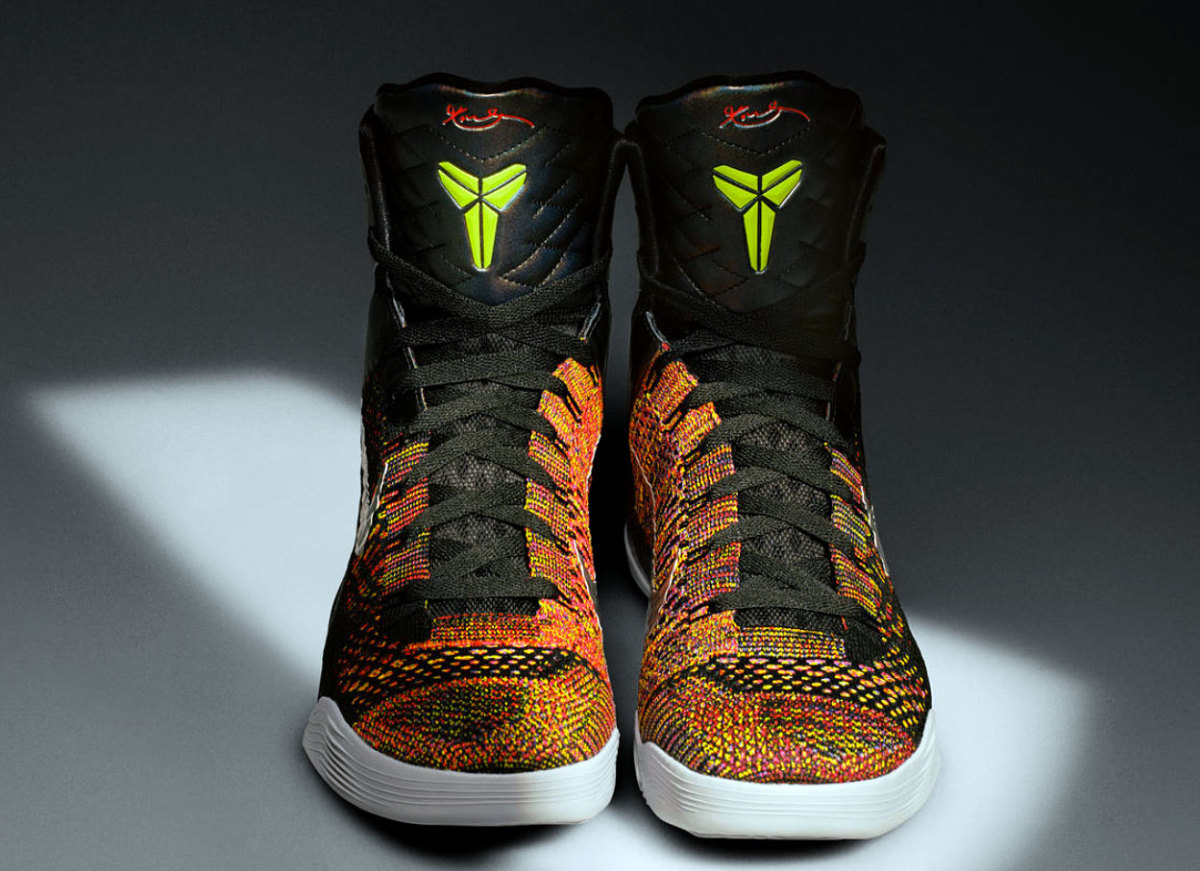
Forget low-cut. The KOBE 9 went ultra-high while unveiling Flyknit yarn for the first time in a basketball shoe when the shoe launched in February 2014. With Lunarlon introduced a year before and Flywire around for years, three key Nike technologies combine in the 9 to allow the much taller shoe to remain lightweight and supportive, yet still with the movement of a low-cut. The engineered yarn also let designers play with color.
Kobe X
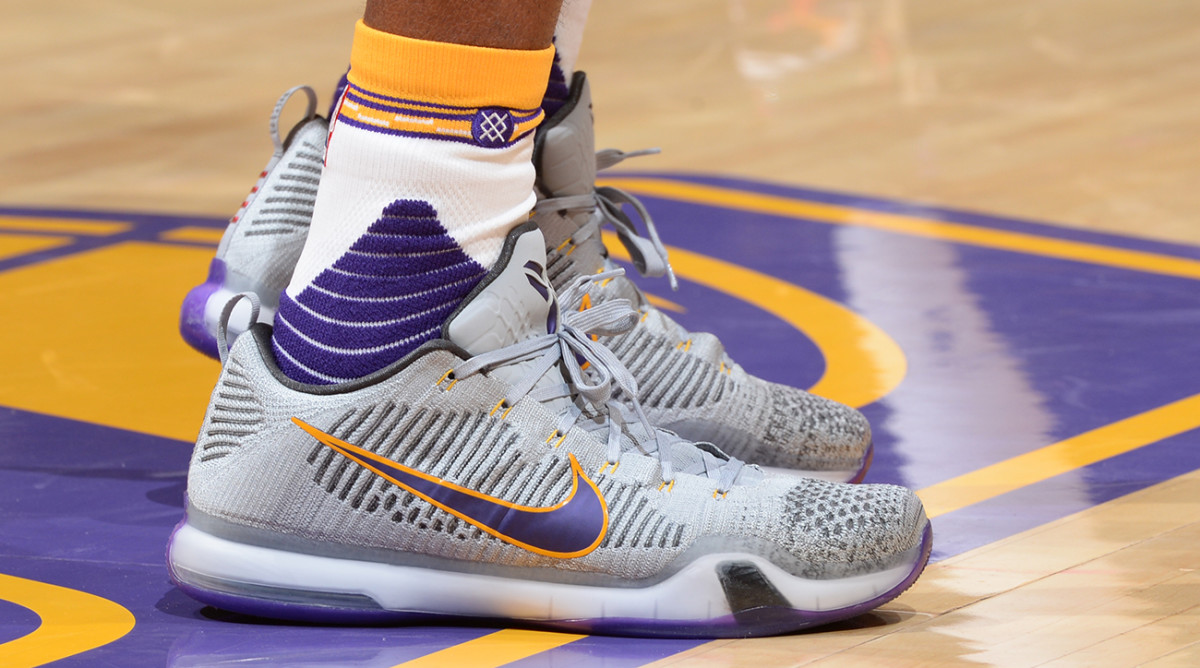
Kobe Bryant's tenth signature shoe featured hybrid cushioning, an advanced traction system and a seamless textile upper. At the time it was considered the most effective traction system in the history of Nike's basketball shoes.
Nike Kobe 11
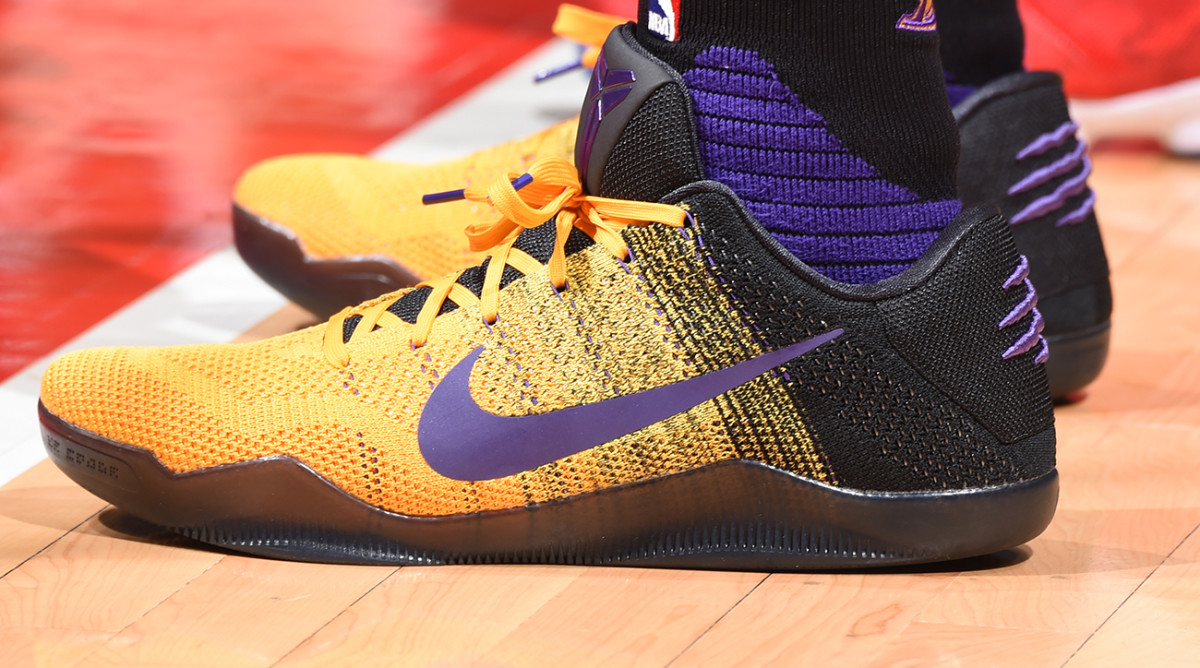
The Nike Kobe 11 was Bryant's final on-court shoe and the last numerical one in his signature line. The KOBE 11 is a progressive low-top that distills Bryant’s signature legacy to its essence: high performance, lightweight, responsive and sophisticated design.The Kobe 11 features Flyknit technology that includes thermoplastic polyurethane (TPU) yarn for superior strength, the brand’s first shoe to feature the new iteration of Flyknit.
Nike Kobe A.D.
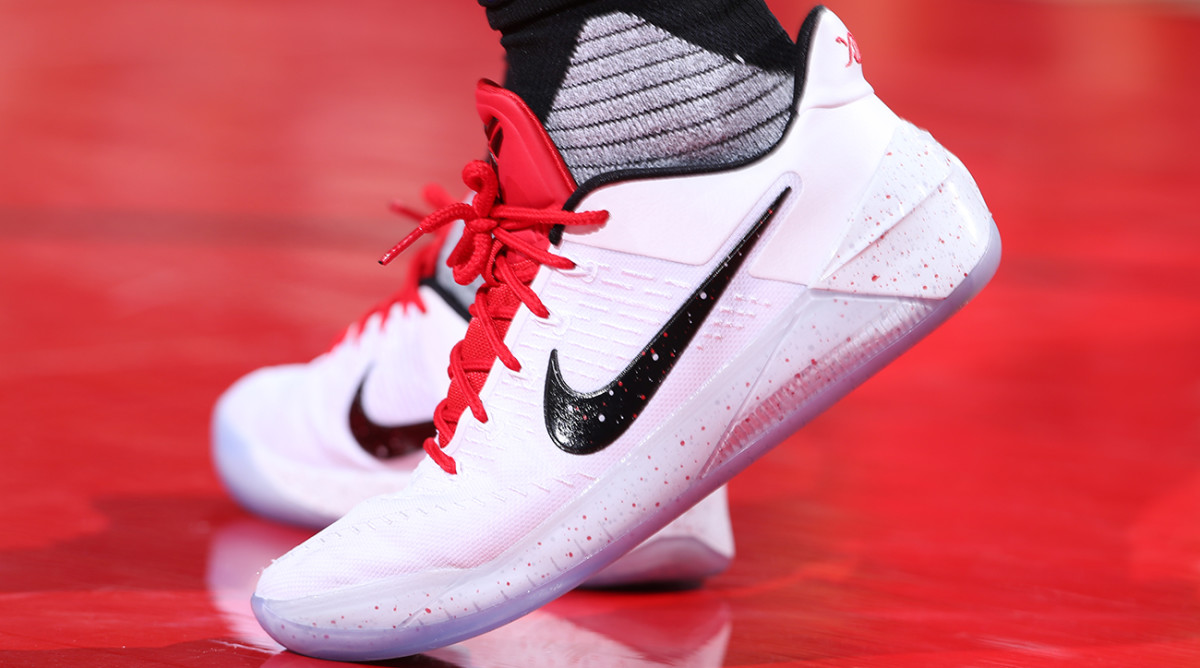
For Kobe's first post-retirement shoe, Nike introduced the Kobe A.D that follows the tradition of lightweight, low-profile on-court footwear. The sneaker combines a Zoom Air unit in the heel, Lunarlon foam in the midsole and a minimal rubber outsole. A breathable mesh upper with incorporated dynamic flywire, provided optimal lockdown.
Nike Kobe A.D. NXT
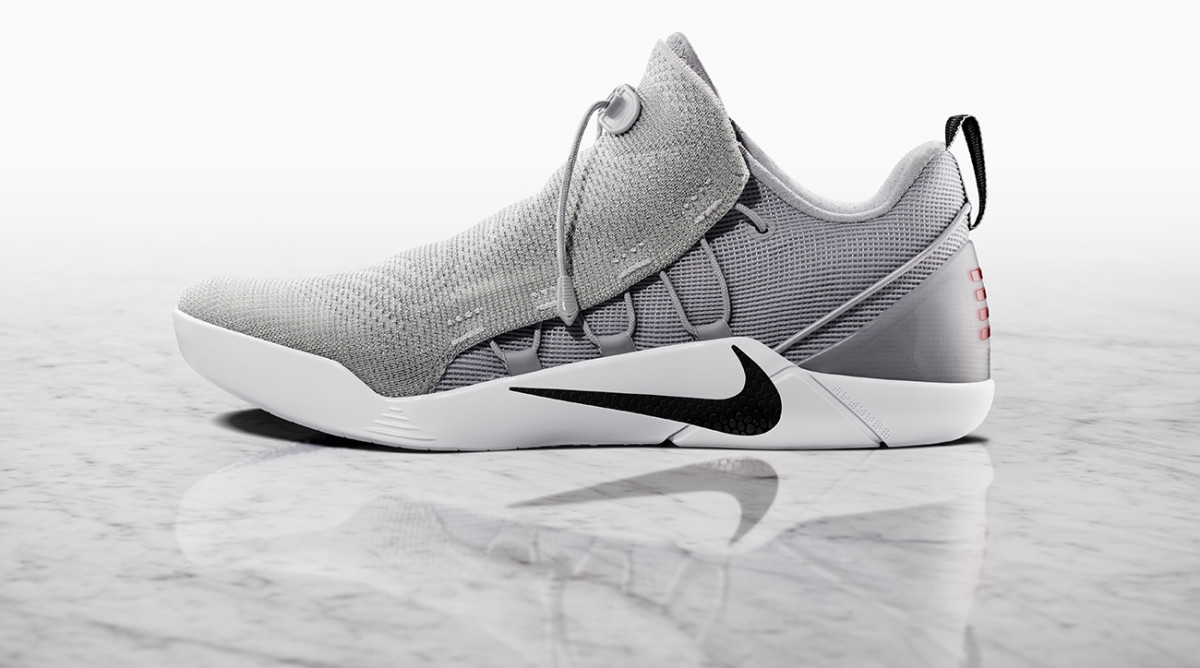
The Kobe A.D. NXT keeps the lightweight, low-profile characteristics of his signature line alive while adding a new layer to Bryant's endless innovation: a no-tie toggle lockdown system.
Nike Kobe A.D. Mid
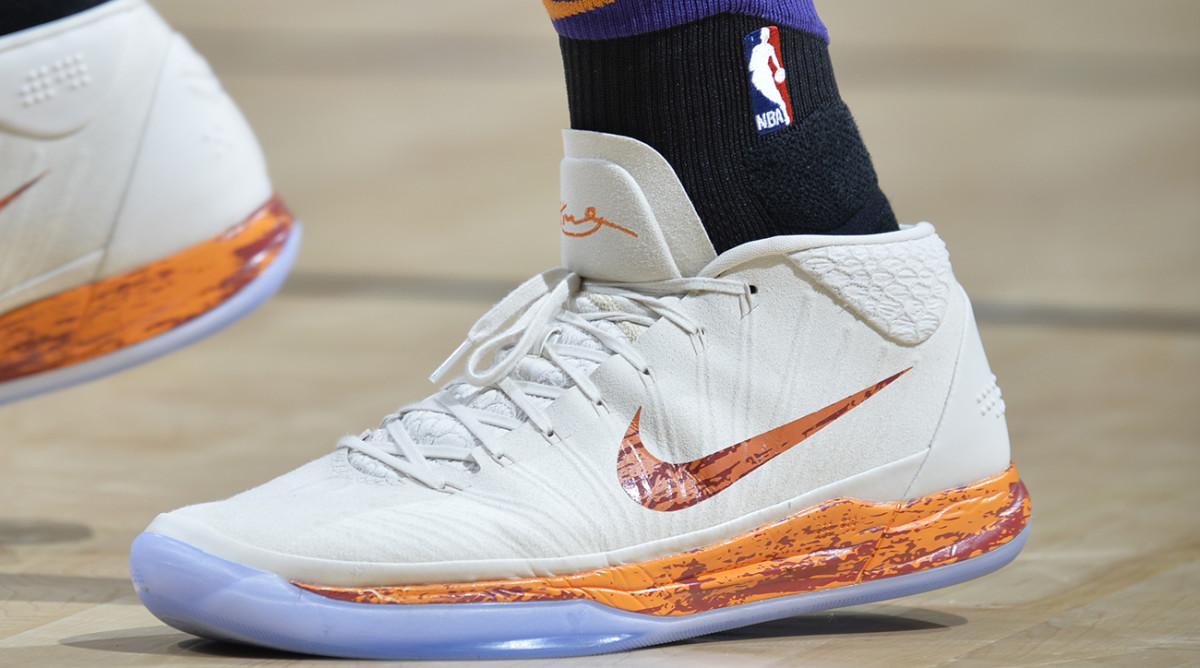
The Kobe A.D. Mid offers a multilayer upper provides a lightweight, ultra-thin feel that’s strong and supportive. Lunarlon foam combines with Zoom Air for soft yet responsive, cushioning. Engineered tread provides optimal traction for cutting and moving swiftly. He became a favorite among NBA stars DeMar DeRozan, Devin Booker and Isaiah Thomas.
Nike Kobe A.D. NXT 360
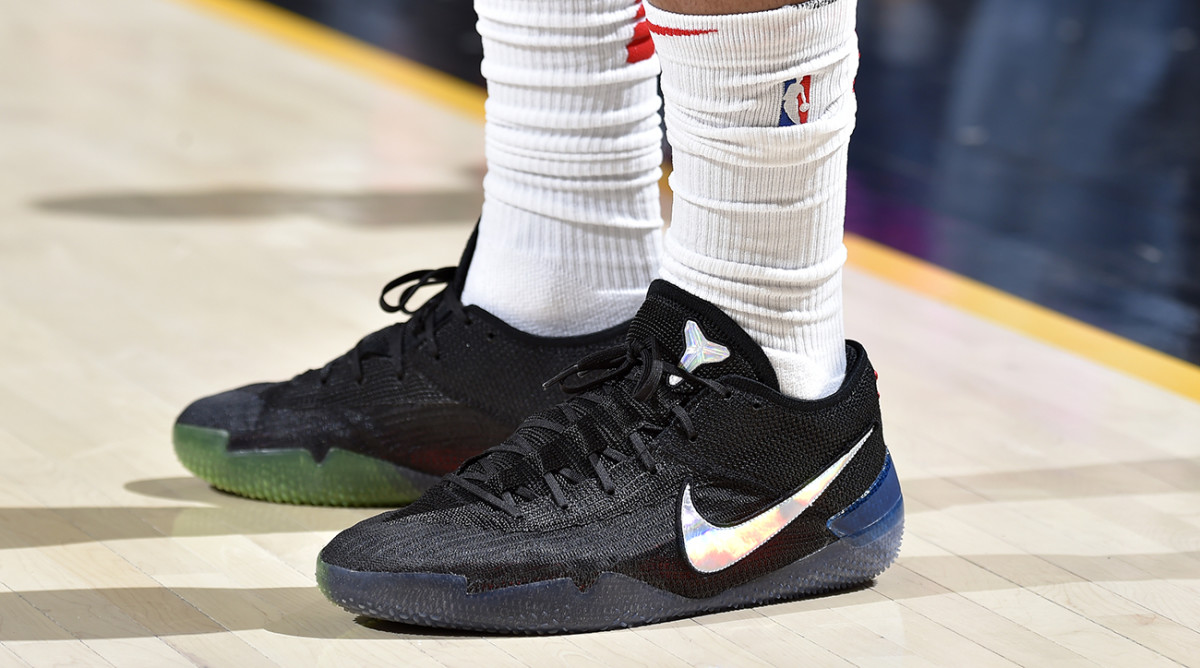
KOBE AD NXT 360 features a next generation Nike Flyknitupper that wraps the foot with 360-degree construction for a secure, second-skin fit. The shoe is equipped with a dual-density drop-in foam midsole made of Nike React technology and Lunarlon to maximize cushioning and response. DeMar DeRozan debuted the shoe on the court.
Nike Kobe A.D.
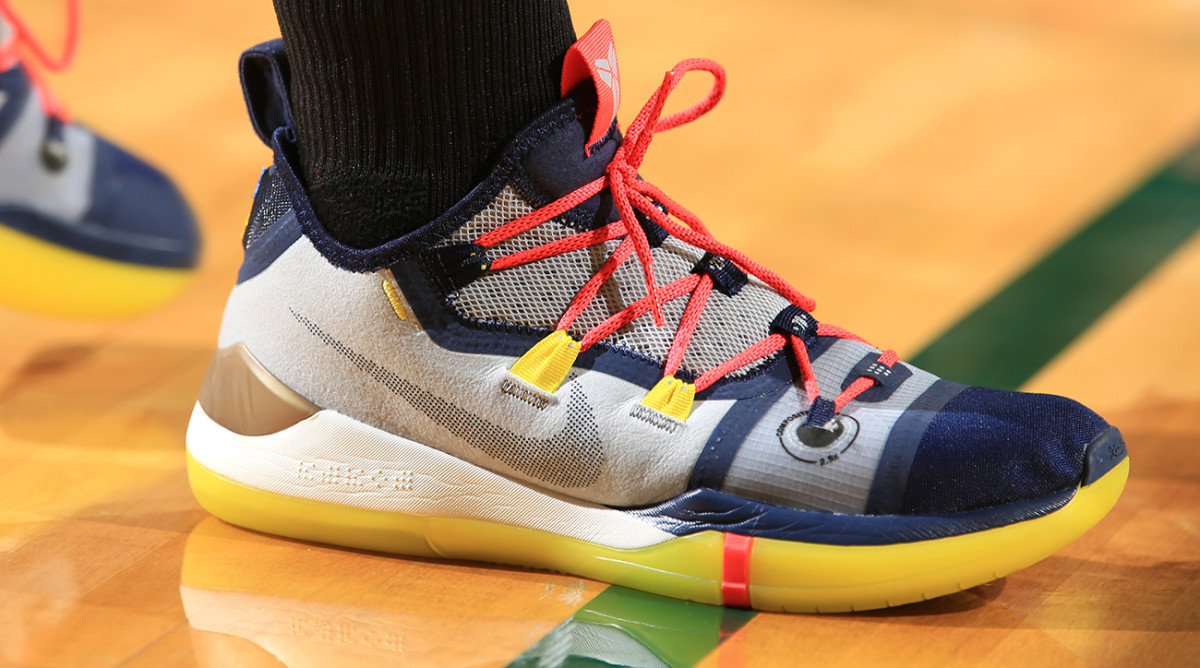
Debuted at the Nike Drew League, the latest Kobe A.D. features a has a full-length mesh bootie that supports the ability to stay locked in. It also features a Zoom Air Unit that fuels explosiveness and an engineered micro-blade outsole pattern that enhances traction.
